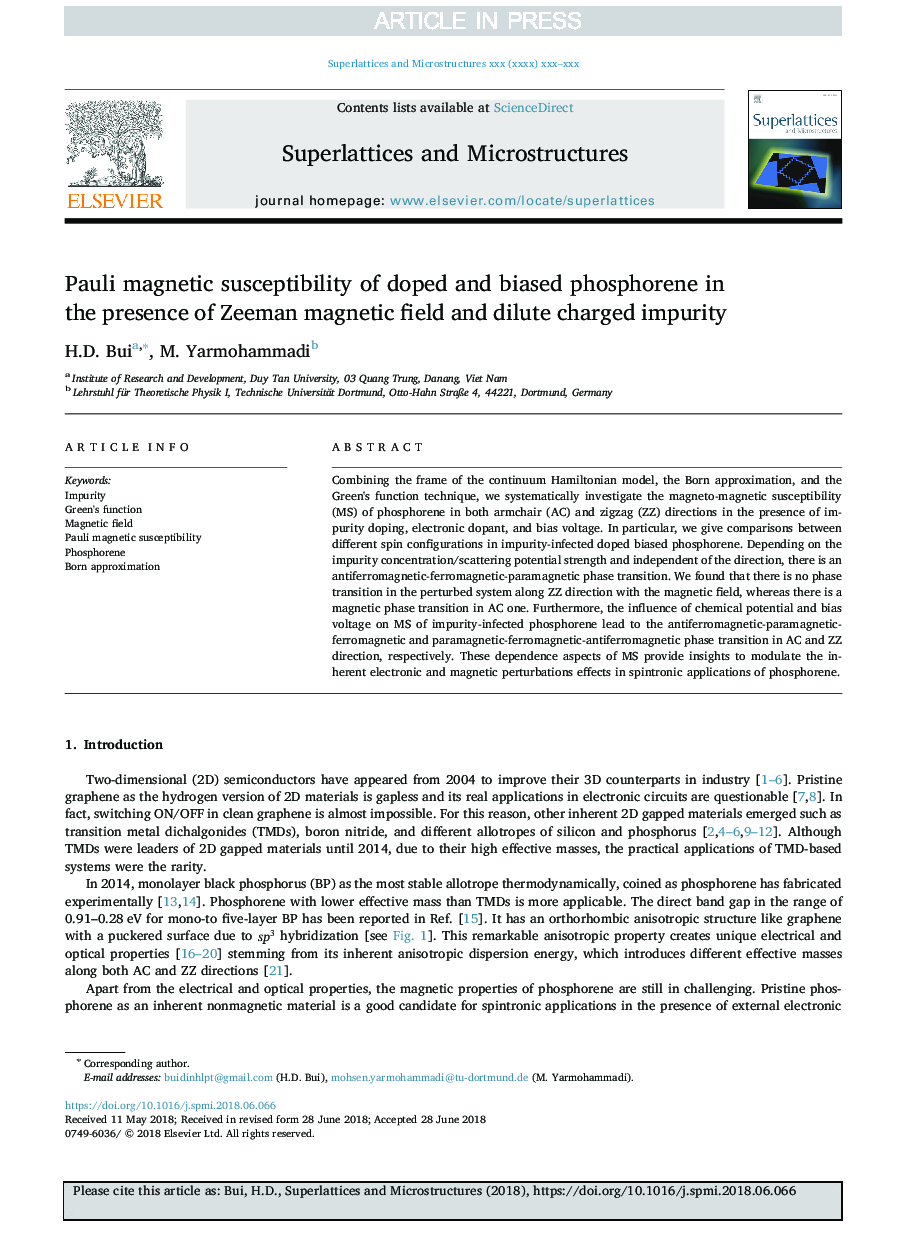| Article ID | Journal | Published Year | Pages | File Type |
|---|---|---|---|---|
| 10155734 | Superlattices and Microstructures | 2018 | 8 Pages |
Abstract
Combining the frame of the continuum Hamiltonian model, the Born approximation, and the Green's function technique, we systematically investigate the magneto-magnetic susceptibility (MS) of phosphorene in both armchair (AC) and zigzag (ZZ) directions in the presence of impurity doping, electronic dopant, and bias voltage. In particular, we give comparisons between different spin configurations in impurity-infected doped biased phosphorene. Depending on the impurity concentration/scattering potential strength and independent of the direction, there is an antiferromagnetic-ferromagnetic-paramagnetic phase transition. We found that there is no phase transition in the perturbed system along ZZ direction with the magnetic field, whereas there is a magnetic phase transition in AC one. Furthermore, the influence of chemical potential and bias voltage on MS of impurity-infected phosphorene lead to the antiferromagnetic-paramagnetic-ferromagnetic and paramagnetic-ferromagnetic-antiferromagnetic phase transition in AC and ZZ direction, respectively. These dependence aspects of MS provide insights to modulate the inherent electronic and magnetic perturbations effects in spintronic applications of phosphorene.
Related Topics
Physical Sciences and Engineering
Materials Science
Electronic, Optical and Magnetic Materials
Authors
H.D. Bui, M. Yarmohammadi,
